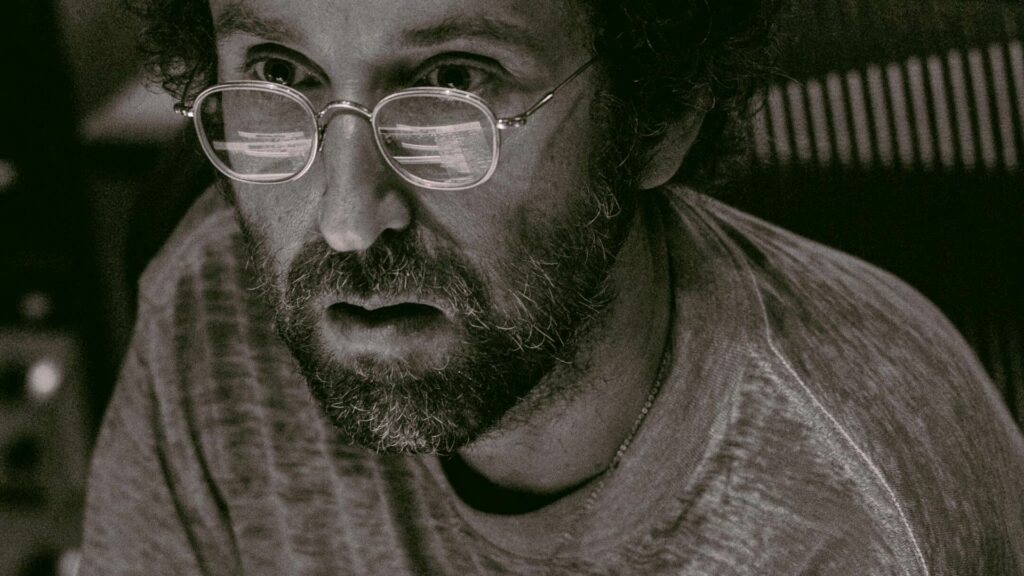Public Pressure’s heavyweights Alex Mazey and John Clay discuss one of the most complex cultural phenomena of our time: cancel culture. A must-read, regardless of your personal views.
Alex Mazey: The attempted cancellation of Martina Navratilova is an example of what Mark Fisher highlighted in ‘Exiting the Vampire’s Castle’ and Byung-Chul Han’s ‘digital panopticon’. Fisher writes in his essay how ‘the Vampires’ Castle specialises in propagating guilt. It is driven by a priest’s desire to excommunicate and condemn, an academic-pedant’s desire to be the first to be seen to spot a mistake, and a hipster’s desire to be one of the in-crowd. The danger in attacking the Vampires’ Castle is that it can look as if – and it will do everything it can to reinforce this thought – that one is also attacking the struggles against racism, sexism, heterosexism.’
Idealistically speaking, Navratilova’s comments should have opened up an opportunity for education through dialogue. But, unfortunately, this is painfully idealistic since the very instance of this dialogue was almost immediately used by the Vampires’ Castle to reinforce the idea that Trans Lives were now up for debate – which is almost never the argument being made; especially when the initial comments were coming from a member of the LGBTQ+ community and feminist pioneer. In my experience, the usual argument against good-faith dialogue on any sensitive issue stems from this prevailing idea that any discussion – even that discussion which wishes to educate and inform – somehow opens the door for a right-wing contingency. As such, the dialogue becomes paralysed by guilt and suspicion.
As Byung-Chul Han points out, social media is ‘coming to resemble, more and more, digital panopticon that discipline and exploit the social.’ He continues, ‘In disciplinary society, the occupants of the panopticon were isolated from each other for more thorough surveillance, and they were not permitted to speak. The inhabitants of the digital panopticon, on the other hand, engage in lively communication and bare themselves of their own free will. In this way, they actively collaborate in the digital panopticon.’ I claim ‘cancel culture’ is today a symptom of this digital panopticon.
John Clay: The prognosis of Cancel Culture in your short essay has merit, and we will discuss them. However, and respectfully, Navratilova is not an advisable case study. Let us address the elephant in the room and outline what we refer to as cancel culture has a far-reaching and far more insidious history beyond the vampire and its castle.
California’s Proposition 6 has a useful history for our discussion. Known as the Briggs Initiative, Proposition 6 (a 1978 bill proposed in the US), sought to fire teachers who identified as openly homosexual on the basis of the possibility of grooming children into becoming gay. Legendary supervisor Harvey Milk used his flamboyant personality and his appeal to intersectionality to dismantle a laughable fear which required a visible champion arguing for such at its peak. His campaign against the bill wasn’t hamstrung by a lack of cognisance (or wilful arrogance) as to how media can, will and delightfully simplify, conflate and commodify retro and modern visions for people who live outside of heterosexuality. Milk’s relationship had to be handled with care due to cancel culture in his day, albeit unnamed and yet to be weaponised online.
Today? Today, Martina Navratilova is still lauded as a relevant leader who receives sympathy from those who occupy positions of power in mainstream media for non-inclusive beliefs and the abusive rhetoric used to espouse them. Surely this baggage was a bomb waiting to go off? Isn’t this situation what we get when articles are written with consumption being the overriding factor rather than investigation which benefits the reader? Surely the architects of our culture war reside outside The Vampire’s Castle? Cancel culture has stepped in to fill in a void that journalism has for many decades failed to occupy, despite its chief tenet of truthful pursuit. Knowing all this, can we cite Navratilova as a cut and dry example of how ‘The Vampire’s Castle’ is the greatest contribution to an ever-growing polarisation of opinion?
Alex Mazey: Regardless of the position of power Navratilova occupies today, the intention was to cancel her; shouldn’t we be as interested in intentions, as we are outcomes? Respectfully, I think the real elephant in the room can be located in how cancel culture has no constant definition or meaning, making it a particularly easy tool to wield cynically (by the powerful) whilst also being challenging to critique. That being said, what really constitutes an advisable case study in this instance?
There’s little difference between the way we talk about cancel culture today and how we talk about terrorism, or fake news, or hate speech, whose unfixed definitions occupy increasingly fragmented and transient spaces within the contemporary vocabulary. In terms of fake news (propaganda), or hate speech, there is nothing novel here. Likewise, I would say cancel culture has a ‘far-reaching and far more insidious history’ beyond even the example you’ve given from the 1970s. I would advise anyone interested in the topic to go and read Bertrand Russel’s speech ‘Free Thought and Official Propaganda’ from 1922, which covers all of the issues we might talk about today in reference to cancel culture.
I did like your characterisation of cancel culture stepping in to fill a void that journalism has failed to occupy. Unfortunately, I am not convinced that such replacements and the simulation of upheld accountability automatically reverts to truthful pursuit. On the contrary, I imagine they enforce new dogmatisms.
John Clay: Agreed, we should investigate intention as well as the outcome of an attempted cancelling. Obviously, the intention to call Navratilova out was made with the purpose of combating the likelihood of her tweets: mass media would be overly keen to spotlight the drama for its own capital gain at least and not question its own bias’ at worst.
Suppose we ignore Navratilova’s baggage and address the useful mutation that bears her name in media content as authentic. In that case, we contribute to the ongoing propagation of a false narrative that ignores her more complicated truth and their complicity to use that untruth to make a more salacious copy without due reflection.
If a ‘necessary conversation’ were to begin and continue, it would focus on the aspects of a simplification of community addressments and public figures, which lends itself to false narratives and bizarre arguments which harms the aforementioned people.
For all its’ slipperiness, the fish that is Cancel Culture can only recontextualise Navratilova’s standing in marginalised communities whilst granting her a larger emboldened wave of TERF and less vocal carryovers from third-wave feminism. Her audience could only grow, an army if you will, ready to rally to her cause with nothing less intimidating (or as loud) as Piers Morgan, his own sizable audience following him from over transatlantic quarters to Good Morning Britain and beyond.
A case that supports your concern with ‘digital panoptic’ would be a case of these non-celebrities types in this handy PDF. Losing your job as an academic is far more suitable to the requirements of identifying the strangulation of discourse.
Download: Tracking Cancel Culture in American Higher Education
No, cancel culture filling the void left open by a compromised media is terrible. I made the statement to support my supposition that the real culprit for considered discourse is our global reportage’s priority of profit over principle? Wouldn’t you agree?
Alex Mazey: Leveraging fear through extreme hypotheticals and conflating Navratilova with Piers Morgan, which in turn invalidates her from a personal history of emancipatory action, remains thoroughly unconvincing.
I would say cancel culture and global reportage are separate instruments in the same orchestra playing the same symphony. We know cancel culture shows complicity to use the same untruths to forward its narratives, usually under the guise of emancipatory praxis. What’s generally presented as emancipatory is ironically the perpetuation of the dominant ideology. Are we really supposed to believe Joe Biden repealing the ban on transgender Americans joining the military – or women rising to the rank of CEO at Northrop Grumman and Lockheed Martin are serious victories for emancipation?
Byung-Chul Han’s analysis of the digital panopticon is again useful here since it highlights how we end up doing capitalism’s job for it. The state-sponsored cancellation of Julian Assange began with this kind of social participation. Beginning with rape accusations followed by the entire playbook of discreditation tactics, we were socially required to think about Assange as the rapist, the narcissist, the shadowy hacker influencing geopolitical affairs, and so on. After writing a report on Julian Assange’s incarceration, UN Special Rapporteur on torture, Nils Melzer gave an interview with EXB in 2020 describing the ‘classic way of discrediting political dissidents in the court of public opinion.’ Melzer continues, ‘Throughout history, allegations of treason, blasphemy and, more recently, sexual misconduct have been very efficiently used to manipulate public opinion against particular persons.’ We know social consensus had been successfully manufactured by the time we saw state enforcers drag Assange from the embassy.
The moral outrage directed at Assange at the level of the social dimension, especially on the virtual plane, had achieved exactly what it had intended to do – collective persecution. The idea that moral outrage and cancel culture’s indistinguishable performativity does not serve the system is farcical. I can cite further examples if you wish.
John Clay: Regarding The Collective persecution of Assange: Like a kitchen knife, the oft nebulous cancel culture we discuss is utilised in multiple ways.
Perhaps you’ll acknowledge the common refusal to re-examine Germaine Greer’s contemporary standing. This resistance is due to her own feminist history, solidarity espoused by journalist’s inspired by her journey and luddites unable to detect how one moment’s transgressive movement has erected boundaries to groups further outside mainstream acceptance, and thus more vulnerable to bias/phantom threats.
Navratilova (often presented by the mainstream media as the de facto arbiter for the wants and needs of the LGBTQ sports community) is not some innocent leader of the oppressed who asked a question in the fair medium of Twitter. And yet, look at how she is consistently framed and how that positioning is echoed without relevant critique in your previous passages. For our discussion, this supposition requires re-evaluation. Navratilova cannot represent the trans community (like the black community, the term is problematic given the multitude of peoples forced under one umbrella).
The popular conflation (by academics and journalists alike) between waves of feminist thought, action and principle must halt. The continual misunderstanding of who the real Navratilova is, harms the proposition that the Vampire’s Castle is the most significant obstacle damming the flow of nuanced conversation, when in fact, it is the redux/simulation of public figures such as Navratilova which contribute to the dissonance we swim against to reach an island of truth.
The simplification of complicated leaders and the support of awkward reductionist simulacra of said spokespeople and their ideals is a variable worth exploring. Martyring those who unwittingly undermine challenges faced by marginalised people is bound to occur due to familiarity with one cause’s figurehead and a lack of visibility for their necessary counterpart.
I’m glad you acknowledge ‘cancel culture stepping in to fill a void which journalism has failed to occupy.’
Alex Mazey: In closing, as you’ve previously mentioned here and elsewhere, one argument against Navratilova exhibiting her freedom of expression can be found in how expression platforms abusive rhetoric and non-inclusivity.
The implication is that such platforms should become responsible towards something exterior to themselves. Firstly, what are the prerequisites for this responsibility; how large does a platform have to grow before becoming responsible for this abstract and unidentified entity? Secondly, what are the constituent elements of this entity that we should feel responsible for? Without falling for idealistic platitudes here, what makes you think we should even have an obligation towards that exterior entity – and what makes it morally infallible within a culture of relativity?
It is precisely this direction of high-profile platforms needing to appear responsible towards this social entity that gives way to our culture of pure simulation as it is precisely in our desire to hold perceived power to account that forces such power into the disingenuous simulation from which it hides forever. Real power eludes itself. How do you differentiate between the spectacle of performativity (which so often exhibits itself within cancel culture also) and genuine acts of holding power – and the often not so powerful – to account? As Baudrillard stipulates, ‘You won’t be able to do it: the network of artificial signs will become inextricably mixed up with real elements….’
As a platform grows in power and influence, it no longer exhibits a true representation of itself, as I think you suggest, but rather a representation that accommodates the required simulation. A company or persons can today exhibit a representation of themselves as righteous whilst committing the most deplorable acts of exploitation and cruelty. This situation can again be observed within cancel culture. Even so, when it comes to identifying indistinguishable performativity, I would like to ask the advocates of cancel culture not how the absence of virtue can be punished today, but rather how can – in the words of Jean Baudrillard – ‘the simulation of virtue be punished?’
John Clay: When Frank B. Wilderson III can only offer a shrug when pushed for methods on how to combat the ills of what he terms AfroPessimism, I can only sympathise. It may fall to a future generation’s zeal and self-inquisition to forge keys for locks we obsess over here in this conversation.
Here’s a semblance of a lockpick you may appreciate. Platforms require a responsibility towards entities that cannot be viewed as exterior, as entities such as co-operation/inclusivity are valuable to the society they operate within, let alone the production area of any given company. A lack of such idealism is corruptive, and I’d be patronising in the extreme as to point out why using the popular press is an adequate example.
Are there simulations here? We’ve both scribed literature that via social contract lives and breaths in accordance with the reception of this joint publication. Perhaps I should be wary of projecting distrust. However, upon reading this debate through before the commitment to this ending passage, well, could we not have arrived at our shared point of view on platforms sooner?
In closing, we’ll all suffer from the falsity of signs and symbols as they claw at our ideals and imperfect history. Indulge me in yet a further treading of ideological waters (such communication ought not to be snubbed but vigilantly policed as an engine to palpable action): The problem as ever lies with us, the many people addicted to the steak in The Matrix. We feast in the restaurant of the now, gorged on memes, cursing the maitre D between mouthfuls, because hey, meta glibness is an addictive marinade.
If only the systems we take umbrage with were populated by people introduced to critical thought as a subject at a primary school level. Then, developmentally appropriate strategies which operate beyond the exclusive Steiner school model would ripple its way throughout generations. Educational reform is the way forward. But, hey, when in a nightmare, dream big.
Alex Mazey’s Sad Boy Aesthetics is out later this year (June 2021) with the award-winning Broken Sleep Books.
Stay in touch with John Clay:
Cover photo: Martina Navratilova by Andrew Campbell
Next story


